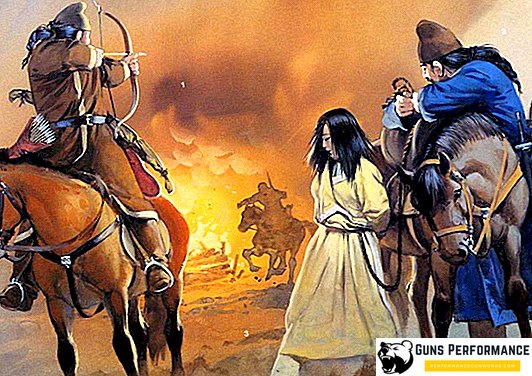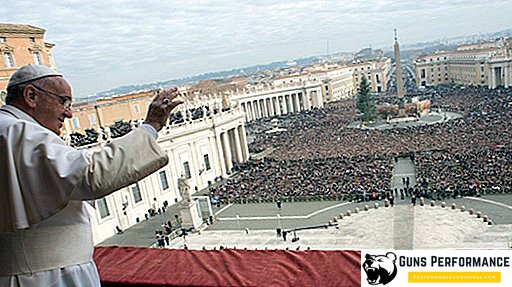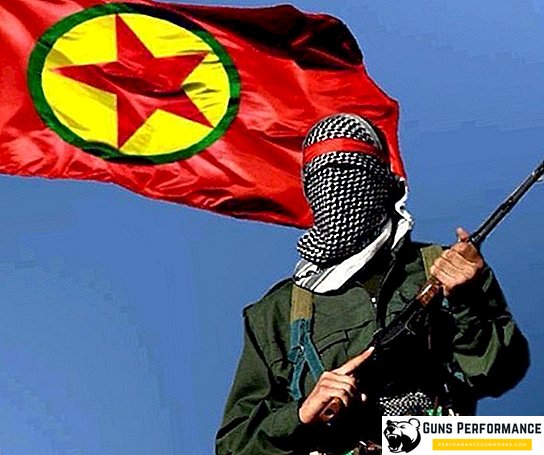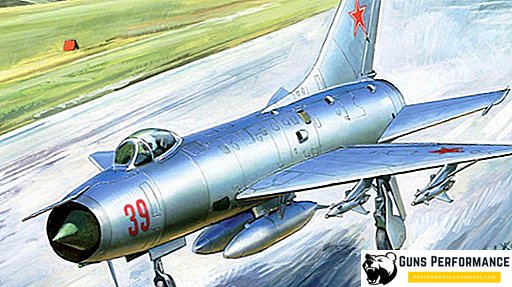The president of Kyrgyzstan is the highest public office in the republic. The head of state is elected in general elections. Any citizen of the republic can become president, for this it is necessary to live in the country for at least 15 years, reach the age of 35 years and be no older than 70 years. A prerequisite for a candidate for this position is proficiency in the national language.
Currently, the president of Kyrgyzstan is Sooronbay Jeenbekov, who managed to win the elections in 2017. According to the laws of the country, Jeenbekov will remain president until 2023, if he is not impeached.
The history of the formation of the Kyrgyz state until the second half of the XIX century

Kirghiz are nomads who came from southern Siberia or the northeastern steppes of Mongolia. The resettlement of tribes was accompanied by bloody wars with the indigenous people. Some local tribes were exterminated, with stronger conquerors entered into tribal alliances. Throughout its history, the territory of modern Kyrgyzstan was in the composition of various states:
- II century BC - The southern part of the territory became part of the State Parkan;
- I-IV century AD - Kyrgyzstan was under the rule of the Kushan kingdom;
- V-VII centuries - the territories fell under the rule of the Western Turkic Kaganate;
- VIII-X century - Karluk Kaganate;
- XI-XII centuries - the state of Karakhanids. At this time, the Kyrgyz tribes often attacked Russia;
- In the XIII century, the Kyrgyz state had a great influence in the region, but the elders did not dare to oppose Genghis Khan. The main task of the Mongols was the looting and collection of taxes, so the local population has repeatedly raised uprisings. All rebellions were crushed with incredible rigidity;
- In the XV century, the Kyrgyz people were fully formed. In this century, there was a massive merger of local tribes, trying together to repel the Mongols. They formed an independent state;
- In the XIX century, the Kyrgyz state fell under the rule of the Kokand Khanate. Its rulers were interested in trade benefits - caravans from East Turkestan passed through Kyrgyzstan.
Frequent attacks on the territory of modern Kyrgyzstan, the purpose of which was robbery, forced the representatives of local tribes to seek a union with Russia.
Kyrgyzstan in the Russian Empire and the further development of the state

The first Kyrgyz lands and tribes joined the Russian Empire after 1850:
- In the first half of the 1850s, Issyk-Kul tribes became Russian subjects;
- After 1855, the Chui Kyrgyz joined them;
- In 1856, the tribes of the Kirghiz of the Tien Shan Mountains and the Talas Valley entered Russia;
- In 1863, all the northern tribes of Kyrgyzstan fell under the protectorate of the Russian Empire;
- In 1876, the tribes of southern Kyrgyzstan were the last to become part of Russia.
The accession process took place during the clashes of the army of the Russian Empire with the Kokand Khanate, which was completely eliminated.
Russia's role in the development of the regional economy is enormous:
- Abolished the system of patriarchal slavery;
- They streamlined the collection of taxes, they became fixed;
- With the help of the Russian government, they stopped the civil strife among the Kyrgyz tribes;
- Began the process of resettlement of land-poor and landless peasants from the southern and central regions of the Russian Empire.
A series of decrees relating to the mass resettlement of the peasantry, a beneficial effect on the transition to a sedentary Kyrgyz way of life. Despite all the advantages of the accession of Kyrgyzstan to Russia, there were certain disadvantages:
- The Russian settlers brought with them not only capitalism and the cultivation of the land, but also a lot of revolutionary ideas;
- Lands were often seized in the colonial fund;
- The tax burden has increased;
- The local population continued to carry traditional duties in favor of their nobility.
The economic situation sharply worsened after the outbreak of the First World War. Food prices have increased several times, Russia massively exported grain and livestock, and the local population was involved in compulsory labor work. In 1916, an uprising broke out in Kyrgyzstan, which was firmly suppressed in accordance with the norms of wartime.
Soviet period in the history of Kyrgyzstan

After the February Revolution of 1917, Soviets of soldiers and workers' deputies began to appear in the region. They submitted to the common policy of the Bolsheviks. At the same time, the traditional system of governance, represented by large landowners and clergy, continued to work in Kyrgyzstan. The first Soviet reforms were indignantly met by the ruling elite. There was a resistance movement, called "Basmachestvo". By 1919, this movement spread throughout the country. To suppress it, the Red Army detachments were sent to Kyrgyzstan, which in 1919-1920 were able to suppress large-scale resistance. Scattered basmachi detachments scattered around the country, continuing their counter-revolutionary activities. According to official statistics, the Basmachi were liquidated in 1920, but according to other sources, the bandits operated until 1940.
In 1920-1930, Kyrgyzstan was subjected to industrialization and collectivization:
- Cattle from nomads massively selected;
- The population was forcibly driven into certain lands, which made it impossible to graze cattle, trampling poor pastures;
- Forced to live in cities, the Kyrgyz had to work in new factories and plants.
In 1929 the first constitution was adopted in the country. It was compiled by the Bolsheviks, and the dictatorship of the proletariat was the cornerstone of this document.
In the second half of the 1930s, Kyrgyzstan was subjected to mass repression. As a result, not only the last representatives of the local land aristocracy were shot, but also all the clergy together with representatives of the national intelligentsia. The beginning of World War II influenced the development of the region. Large Soviet enterprises began to move to Kyrgyzstan, unaffected by hostilities. This led to a change in the national composition of the Soviet republic and a new stage of industrialization.
After the beginning of perestroika in Kyrgyzstan, the number of clashes on interethnic grounds increased. To end the clashes between Uzbeks and Kyrgyz, troops of the Soviet Army were brought into the country.
Formation of an independent state

In October 1990, the Supreme Soviet of the Kirghiz SSR renamed the Soviet republic "Kyrgyzstan". Stages of development of the country:
- In 1991, they elected the first president, Askar Akayev. After being elected, the head of state tried with all his might not to lose power from his hands;
- Akayev was re-elected 2 more times - in 1995 and 2000;
- In 2003, the president held a referendum, trying to change the constitution and electoral system;
- In 2005, the next presidential elections were held, accompanied by a wave of protests. Akayev was overthrown;
- In July 2005, Kurnmanbek Bakiyev was elected as president. After his inauguration, he promised that he would restore order in the country;
- In 2006 it became clear that the new president is not going to change the internal policy of the state. This led to another wave of rallies and protests. Under pressure from the opposition, Bakiyev was forced to sign a draft of a new constitution restricting presidential powers;
- In 2010, Bakiyev was overthrown. The Provisional Government of Kyrgyzstan came to power;
- In 2011, democratic elections were held in the country, Atambayev became the president. His mandate ended in 2017.
Features of the constitution of Kyrgyzstan

The first attempts to create a new constitution were made in October 1990. On October 27, the Supreme Soviet of the Kirghiz SSR adopted a resolution on the formation of a commission to draft a constitution. Until that time, the Soviet document, adopted in 1978, worked. In May 1991, a working group was established to draft the Kyrgyz constitution. By the end of the year, members of the group were able to develop a single project submitted to the Supreme Council for consideration. 2 times significant changes were made to it. President Akayev has been actively involved in drafting the constitution. It was approved in May 1993.
In 1994, the main document of the country began to undergo additions and changes. Akayev was concerned about the transformation of parliament into a bicameral one. The constitution changed:
- In 1996 there was a referendum that expanded the powers of the president;
- In 1998, another referendum was held in Kyrgyzstan, which considered amendments and additions to the constitution. Thanks to Akayev’s actions, presidential powers increased further;
- In 2003, the constitution changed. Akayev tried to be a dictator with unlimited power;
- In 2006, after the overthrow of the Akayev regime, the constitution was changed. Presidential power substantially limited.
After the overthrow of the Bakiyev regime in 2010, new amendments and additions were made to the main document of Kyrgyzstan. By order of President Atambayev, some Bakiyev approximations were arrested.
The status and responsibilities of the president of Kyrgyzstan

The principles of the work of the branches of state power in the Kyrgyz Republic are enshrined in the constitution:
- based on the principles of the power of the people;
- submitted and provided by the president;
- divided into legislative, executive and judicial.
All branches of government are required to work on the principle of interaction with each other. Legislative power is represented by the president, parliament and government. Voters have the right of legislative initiative. For this you need to collect at least 30,000 signatures.
Now the main legislative body in the country is the unicameral parliament, the Zhogorku Kenesh. It adopts all laws that are necessarily signed by the president of Kyrgyzstan. The head of state has the right to impose a veto on a law passed by parliament, and send it back for revision.
Duties and powers of the head of state:
- He is the official head of state and the highest official in the republic;
- Defines all the main directions of development of foreign and domestic policy of Kyrgyzstan;
- Takes the necessary measures to strengthen the sovereignty of the republic and protect its territorial borders;
- Ensures the coordinated work of all the highest state authorities;
- Is responsible to the people for the functioning and legality of the work of the branches of government;
- Holds the post of commander in chief of the armed forces;
- Appoints the prime minister and other senior government officials;
- Gives the rank of senior commanders of the armed forces.
The government of Kyrgyzstan, according to the country's constitution, is accountable to the parliament and the president. The head of state has the right of legislative initiative, he can set various tasks for the government concerning the further development of the state.
Despite all his powers, the president of Kyrgyzstan does not belong to the branch of the executive branch. He and the parliament form the government. In some cases stipulated in the constitution, the head of state has the right to dissolve the government. Parliament may declare a vote of no confidence in the president and get him removed from office.
Basic Government Principles and the Prime Minister Appointment Procedure

The government of Kyrgyzstan is the highest state authority. This is enshrined in the country's constitution. Subordinate to him:
- Ministry of the Republic;
- State committees of various kinds;
- Administrative institutions;
- Executive agencies;
- All local government.
The Prime Minister is obliged to follow the work of the government, he determines the structure of the state authority and submits it for approval to Parliament by the Jogorku Kenesh.
The work of the government of Kyrgyzstan is connected with the resolution of all state governance issues that are not within the competence of the parliament and the president. The main tasks include:
- Ensuring the implementation of all constitutional norms and laws adopted by the Parliament and the President of the Republic;
- Implementation of foreign and domestic policy of the state;
- The implementation of measures relating to the observance of laws, rights and freedoms of citizens;
- Monitoring the work of bodies related to the protection of public order and the fight against crime;
- Execution of financial, price, tariff and other state policies;
- Development of the annual state budget. The government must provide the draft budget to the parliament and the president;
- Ensuring interaction with civil society.
In addition, foreign economic activity is also a direct responsibility of the government of the state.
The procedure for selecting the head of government (prime minister):
- Candidates for the post nominated by members of parliament. As a rule, a candidate is nominated by a political party with at least 50% of the seats;
- The candidacy of the future prime minister is considered by the president;
- The head of state, within 3 days, makes an appointment to the post.
The Prime Minister is obliged to submit the structure of the government to the Parliament within 7 days. The approved list is submitted to the president for signature. The head of state has the right to independently form a government if deputies of parliament cannot submit candidates for the post of prime minister.
List of presidents of Kyrgyzstan and their main merits

Since the republic received independence, 5 people have been in the presidency:
- 1991-2005 - Askar Akayev. Academician of the Academy of Sciences of the Kirghiz SSR, Honored Doctor and Professor in the field of optics and computer technology. In 1990 he became president of the Kirghiz SSR. In 1991, proclaimed the independence of the republic. In 1995 he was re-elected for a second term in a row. Re-elected for the third time in 2000. In 2005 he was overthrown as a result of the Tulip Revolution. The main reason for the commencement of unrest was the numerous frauds in the presidential elections in 2005;
- 2005-2010 - Kurmanbek Bakiyev. During the Tulip Revolution served as prime minister. In the presidential election, he competed with Felix Kulov, who withdrew his candidacy after Bakiyev’s promise to make him prime minister. In 2007, he dissolved the parliament and held a referendum, abolished the post of prime minister. The years of Bakiev’s rule are characterized by an increase in presidential power. In 2010 he was overthrown, now lives in Belarus, received citizenship of this country. In absentia was sentenced in Kyrgyzstan to 24 years in prison. The Belarusian prosecutor’s office refused to extradite the former president to the Kyrgyz authorities;
- 2010-2011 - Roza Otunbayeva. The head of the Provisional Government of Kyrgyzstan. In May 2010, it was proclaimed president of Kyrgyzstan a temporary period. The second ever woman president in Muslim countries. He currently holds the position of the head of the Roza Otumbaeva Initiative International Public Foundation;
- 2011-2017 - Almazbek Atambayev. The hero of the Kyrgyz Republic is widely known that he appointed his drivers and guards to high government positions. The personal driver of President Ilmiyanov was able to enter the top 100 richest people of Kyrgyzstan for 6 years;
- 2017-our days - Sooronbay Zheenbekov. He started his career as a teacher of Russian language and literature.
The next presidential elections in Kyrgyzstan should be held in 2023.
Presidential residence and its features

The residence of the head of state is called the White House. In 2005, the building was seriously damaged during the riots. The renovated residence was destroyed in 2010, when a fire broke out that damaged and destroyed documents in the archives.
The building in which the president’s reception is located has 7 floors and is built in the typical Stalinist modern style. The residence was commissioned in 1985. Initially, the building housed the Central Committee of the CPSU of the Kirghiz SSR.
Currently, the presidential power in Kyrgyzstan is seriously limited by the constitution. It is not yet clear whether the new president is content with his role or will try to hold a referendum in order to obtain dictatorial powers. From the history of Kyrgyzstan it is clear that it will not lead to anything good.












